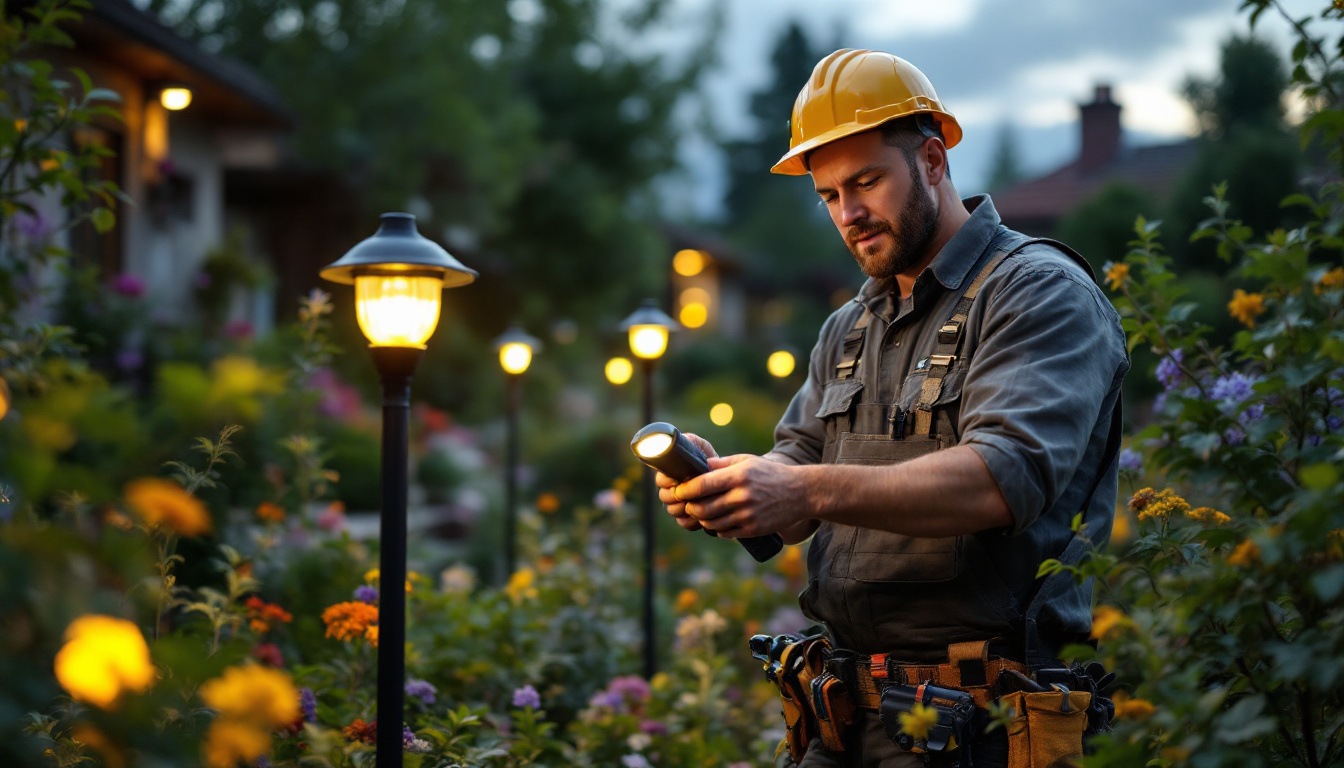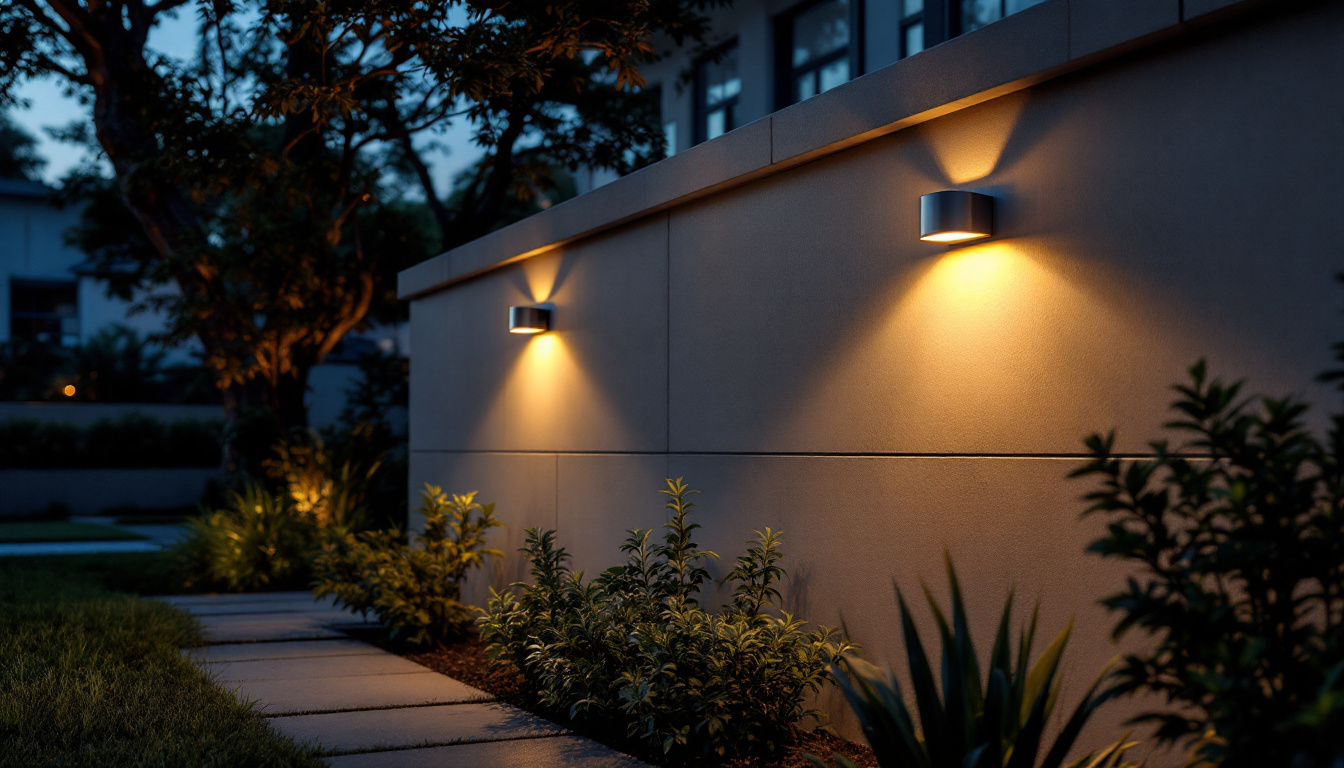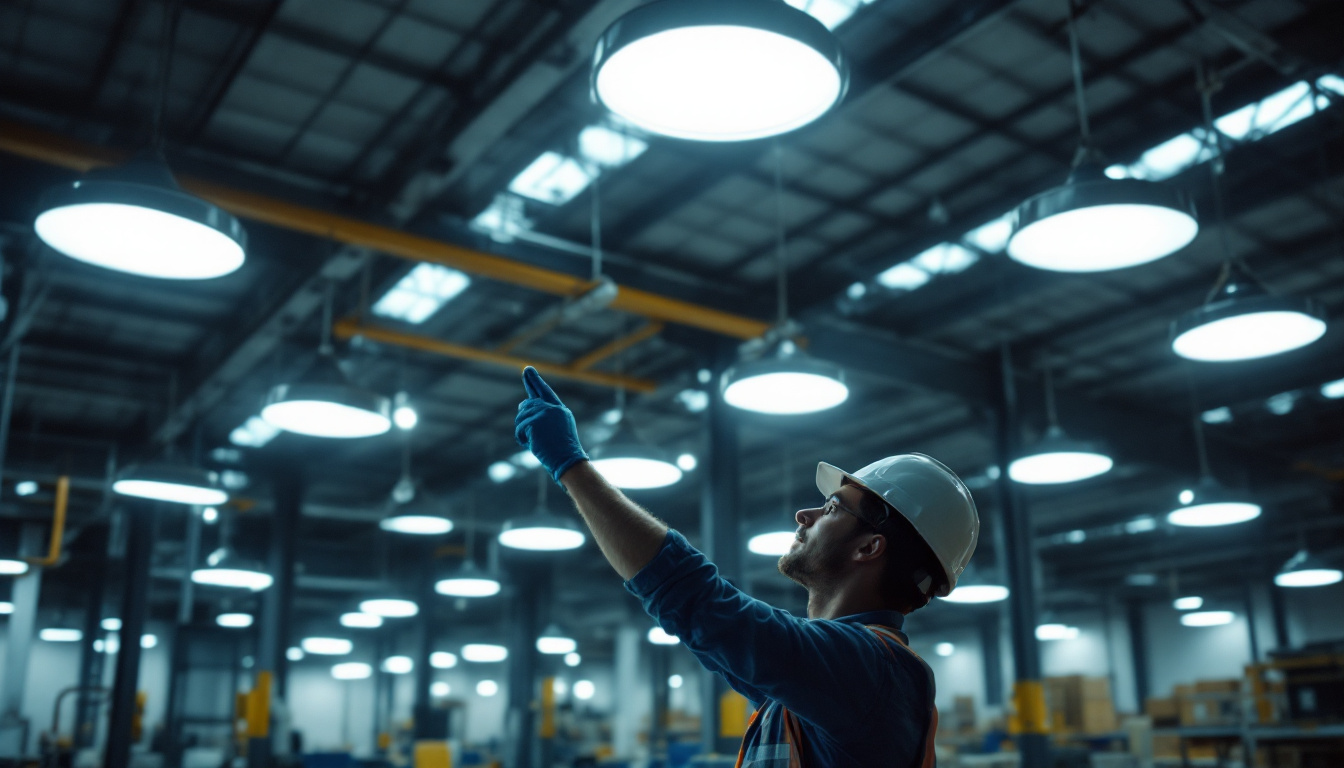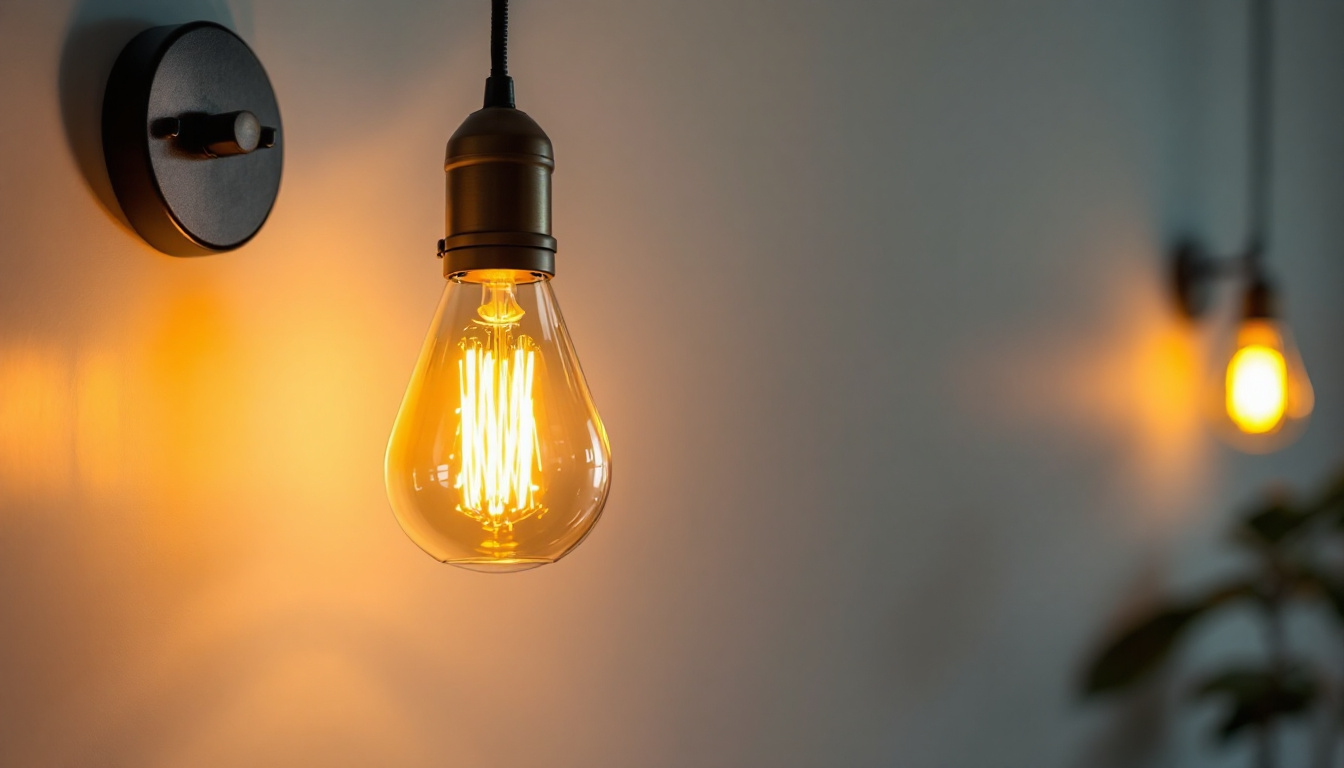

In the ever-evolving world of outdoor lighting, LED solar lighting has emerged as a game-changer. For lighting contractors, understanding the intricacies of these technologies is essential not only for enhancing their service offerings but also for meeting the growing demand for sustainable solutions. This article delves into the essential tools and knowledge required for lighting contractors to excel in the field of LED solar lighting installations.
LED solar lighting combines the efficiency of LED technology with the sustainability of solar energy. These systems harness sunlight during the day and convert it into electricity, which powers the LED lights at night. The advantages of this technology are numerous, including energy savings, reduced carbon footprint, and minimal maintenance requirements. Furthermore, the integration of smart technology in some LED solar lighting systems allows for features such as motion sensors and dimming capabilities, enhancing both security and energy conservation.
One of the primary benefits of LED solar lighting is its energy efficiency. LED lights consume significantly less power compared to traditional incandescent bulbs, which translates to lower energy costs. Additionally, solar-powered systems eliminate the need for extensive wiring and electrical infrastructure, making installation simpler and more cost-effective. This not only reduces the upfront costs but also minimizes the environmental impact associated with conventional electricity generation.
Moreover, LED solar lights are designed to withstand various weather conditions, ensuring longevity and reliability. With advancements in technology, these lights can now provide bright illumination for extended periods, making them suitable for a variety of applications, from residential gardens to commercial parking lots. The durability of LED solar lights also means they can operate effectively in extreme temperatures and harsh weather, further enhancing their appeal for outdoor use. Their ability to function independently from the grid makes them an excellent choice for remote areas where traditional power sources are not accessible.
For lighting contractors, familiarity with the different types of LED solar lighting is crucial. Options include pathway lights, floodlights, wall-mounted fixtures, and decorative garden lights. Each type serves a unique purpose and can be tailored to meet specific client needs. Understanding the specific requirements of each project allows contractors to provide customized solutions that enhance both functionality and aesthetics.
Pathway lights, for instance, are ideal for illuminating walkways and driveways, enhancing safety and aesthetics. Floodlights, on the other hand, provide powerful illumination for larger areas, such as sports fields or commercial properties. Additionally, wall-mounted fixtures can be strategically placed to enhance security around buildings, deterring potential intruders while providing a welcoming ambiance. Decorative garden lights not only serve a practical purpose but also add a touch of elegance to outdoor spaces, allowing homeowners to showcase their landscaping features even after sunset. Understanding these distinctions allows contractors to recommend the best solutions for their clients, ensuring satisfaction and optimal performance.
Equipping oneself with the right tools is imperative for any lighting contractor. The installation of LED solar lights requires a combination of general tools and specialized equipment to ensure a seamless process. With the growing popularity of solar technology, having a well-rounded toolkit can set contractors apart in a competitive market, enabling them to deliver high-quality installations efficiently.
Every contractor should have a reliable set of hand tools, including screwdrivers, pliers, and wrenches. These basic tools are essential for assembling fixtures and securing them in place. Additionally, a tape measure and level are vital for ensuring proper alignment and positioning of lights. The precision of these measurements can significantly impact the aesthetic and functional performance of the lighting installation, making it crucial to take the time to get it right.
Having a good quality drill is also important, especially for mounting fixtures securely. Depending on the installation surface, different drill bits may be required to accommodate various materials, such as wood, concrete, or metal. Furthermore, a cordless drill can provide the flexibility needed to navigate outdoor spaces without the hassle of cords, allowing for a more efficient workflow. A set of hex keys or Allen wrenches can also be beneficial, as many modern fixtures utilize these for assembly, further enhancing the contractor’s ability to adapt to different products and designs.
While solar lighting systems are designed to operate independently of the electrical grid, understanding electrical principles is still important. Contractors should invest in multimeters to test voltage and ensure that solar panels and batteries are functioning correctly. This is particularly important when troubleshooting issues or ensuring optimal performance. A thorough understanding of how to interpret the readings from these devices can help contractors diagnose problems quickly, saving both time and resources during the installation process.
Additionally, solar charge controllers may be necessary for certain installations, as they regulate the charging process of the batteries and prevent overcharging, which can lead to battery failure. These controllers not only extend the lifespan of the batteries but also enhance the overall efficiency of the solar lighting system. Familiarity with different types of controllers, such as PWM (Pulse Width Modulation) and MPPT (Maximum Power Point Tracking), can further empower contractors to make informed decisions based on the specific needs of each installation, ensuring that clients receive the best possible performance from their solar lighting solutions.
Proper installation techniques are crucial for maximizing the performance and longevity of LED solar lighting systems. Contractors should be well-versed in the best practices for site assessment, positioning, and securing fixtures.
Before installation, a thorough site assessment is essential. This involves evaluating the area for sunlight exposure, potential obstructions, and the specific lighting needs of the client. Understanding the sun’s path throughout the day helps determine the best locations for solar panels to receive maximum sunlight.
Contractors should also consider the aesthetic aspects of the installation, ensuring that the lights complement the surrounding environment. This might involve selecting fixtures that match the architectural style of the property or the landscape design.
Once the site assessment is complete, positioning the fixtures correctly is the next step. Solar lights should be installed in areas that receive direct sunlight for a significant portion of the day. This ensures that the batteries are charged adequately, allowing for optimal performance during nighttime hours.
Securing fixtures is equally important. Depending on the design, lights may need to be anchored to the ground or mounted on walls. Using appropriate fasteners and ensuring that fixtures are level will enhance their stability and effectiveness.
Although LED solar lighting systems are low-maintenance, periodic checks are necessary to ensure they function optimally. Lighting contractors should educate clients on basic maintenance practices and be prepared to address common issues that may arise.
Routine maintenance for solar lights typically includes cleaning the solar panels to ensure they are free from dirt and debris. This is crucial for maximizing sunlight absorption. Additionally, contractors should recommend checking the battery condition periodically, as batteries may need replacement after several years of use.
Inspecting the fixtures for any physical damage or wear is also essential. This includes checking for loose connections, cracked lenses, or corroded components. Addressing these issues promptly can prevent more significant problems down the line.
Contractors should be equipped to troubleshoot common issues that clients may encounter. For instance, if lights are not turning on, it may be due to insufficient sunlight exposure or a faulty battery. In such cases, checking the installation location and ensuring that solar panels are clean can often resolve the issue.
Another common problem is lights dimming over time. This may indicate that the batteries are nearing the end of their lifespan. Educating clients on the expected lifespan of components can help manage their expectations and facilitate timely replacements.
Providing exceptional client education and support is a hallmark of a successful lighting contractor. By empowering clients with knowledge about LED solar lighting, contractors can foster trust and enhance customer satisfaction.
During initial consultations, contractors should take the time to explain the benefits of LED solar lighting, including energy efficiency, cost savings, and environmental impact. Clients who understand the advantages are more likely to invest in these solutions.
Additionally, discussing the various options available allows clients to make informed decisions based on their specific needs and preferences. This personalized approach can lead to more successful projects and repeat business.
After the installation is complete, providing ongoing support is vital. Contractors should encourage clients to reach out with any questions or concerns regarding their new lighting systems. Offering a warranty or maintenance plan can also enhance client confidence in the investment.
Furthermore, follow-up visits to assess the performance of the lighting systems can demonstrate a contractor’s commitment to quality service. This proactive approach not only builds client relationships but also opens doors for future projects and referrals.
The lighting industry is constantly evolving, with new technologies and trends emerging regularly. For lighting contractors, staying updated is essential to remain competitive and provide the best solutions for clients.
As technology advances, new features and functionalities are being integrated into LED solar lighting systems. For instance, smart solar lights equipped with motion sensors and remote control capabilities are gaining popularity. These innovations enhance security and convenience, making them attractive options for clients.
Contractors should actively seek out training and resources to familiarize themselves with these emerging technologies. Attending trade shows, workshops, and seminars can provide valuable insights and networking opportunities within the industry.
With a growing emphasis on sustainability, contractors should also be aware of the environmental considerations associated with lighting installations. This includes understanding the lifecycle of materials used in solar lights and promoting eco-friendly practices.
By advocating for sustainable solutions and practices, contractors can position themselves as leaders in the industry, appealing to environmentally conscious clients and contributing to a greener future.
LED solar lighting is not just a trend; it represents a shift towards more sustainable and efficient outdoor lighting solutions. For lighting contractors, mastering the essential tools, installation techniques, and maintenance practices is crucial for success in this evolving market.
By staying informed about industry trends and providing exceptional client education and support, contractors can enhance their service offerings and build lasting relationships with clients. As the demand for LED solar lighting continues to grow, those who adapt and innovate will undoubtedly thrive in this dynamic field.
Ready to elevate your lighting projects with the efficiency and sustainability of LED solar lighting? Look no further than LumenWholesale for all your lighting needs. We provide contractors with the highest quality, spec-grade lighting products at unbeatable wholesale prices, ensuring you get the best value for your investment. Our extensive selection is designed to meet the highest industry standards, so you can trust in the reliability and performance of every light you install. Plus, with free shipping on bulk orders, you can stock up on premium lighting solutions without worrying about hidden fees or compromises. Embrace the perfect combination of quality, affordability, and convenience today. Visit LumenWholesale for Wholesale Lighting at the Best Value and start transforming your outdoor spaces with confidence.

Discover essential tips for lighting contractors to avoid common pitfalls when installing solar lights on outdoor walls.

Discover why purchasing high bay retrofits in bulk from local distributors might not be your best bet.

Discover the top high bay LED lights with our comprehensive checklist tailored for lighting contractors.

Discover essential insights and expert tips for lighting contractors in this comprehensive guide on light fixtures.
Get notified when NEW deals are released.
Optimize your budget with wholesale discounts.
Only top-quality, specification-grade lighting products.
No additional costs at checkout - what you see is what you pay.
We understand the unique needs of contractors.